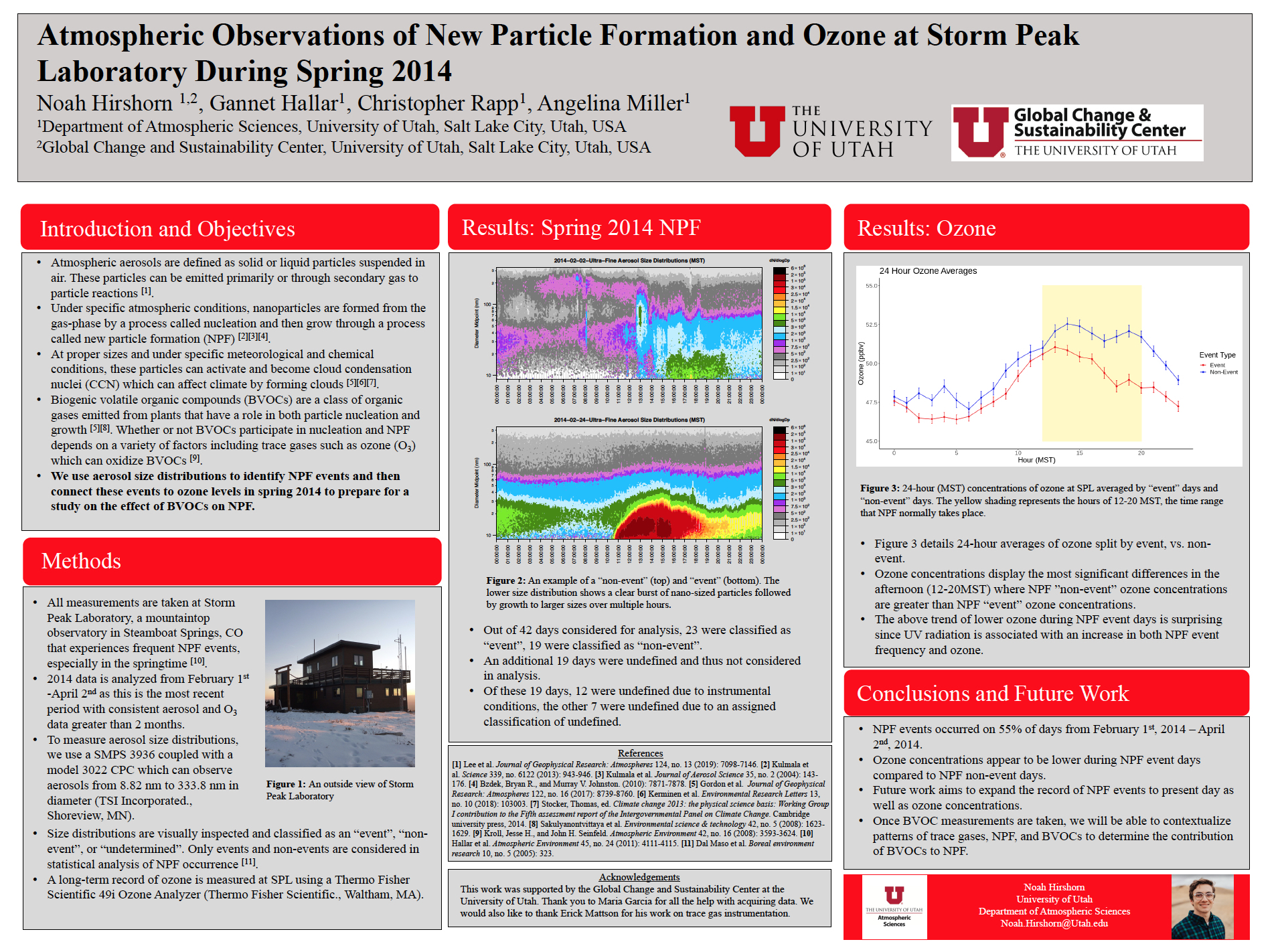New Particle Formation Events and the Impacts on Cloud Condensation Nuclei at Storm Peak Laboratory
–Noah Hirshorn, A. Gannet Hallar, Christopher Rapp, Lauren Zuromski, Ian McCubbin
[bs_collapse id=”collapse_bb86-afd7″]
[bs_citem title=”Bio” id=”citem_e610-6c22″ parent=”collapse_bb86-afd7″]
I am currently a student in Dr. Gannet Hallar’s group pursuing an M.S. in atmospheric sciences. My research focuses on new particle formation events and whether or not they can form cloud condensation nuclei (CCN) at Storm Peak Laboratory in Colorado. Before coming to the University of Utah, I studied environmental science and chemistry at Colorado College. When I am not doing research, I enjoy exploring Utah and playing volleyball with my wife.
[/bs_citem]
[bs_citem title=”Abstract” id=”citem_eca8-96a7″ parent=”collapse_bb86-afd7″]
New particle formation (NPF) is a source of atmospheric aerosol number concentration which can occur in both urban and pristine environments. Aerosol from NPF can impact climate by growing to larger sizes and under proper conditions, forming cloud condensation nuclei (CCN). We use a novel methodology to identify NPF and present data detailing the impact of NPF on CCN formation at Storm Peak Laboratory (SPL). We further implement a statistical-based method to determine times when observed CCN concentrations are influenced by NPF. Results show that spring and winter display the highest frequency of NPF events occurring 50% of the time in spring and 44% of the time in winter. Measurements of CCN at SPL are then explored demonstrating that NPF events significantly contribute to CCN concentrations at SPL during the winter and spring. We also summarize the results from 2021 investigating the gases that could affect particle formation and growth.
[/bs_citem]
[bs_citem title=”Audio Narrative” id=”citem_780c-0f71″ parent=”collapse_bb86-afd7″]
When small particles in the atmosphere called aerosols grow through a process known as new particle formation (NPF), they can become cloud condensation nuclei (CCN) and potentially form clouds. The impact NPF has on CCN is a source of uncertainty when it comes to understanding climate. To address this uncertainty, we present results and new methods to determine if NPF events enhance CCN formation at Storm Peak Laboratory, a mountaintop observatory in Colorado. Results show that NPF is most frequent and significantly increases CCN concentrations during the spring and winter seasons at SPL.
[/bs_citem]
[/bs_collapse]
